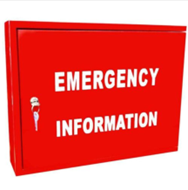It is vital that all communities – including village communities – are well prepared to deal with the immediate impact and subsequent consequences of these events.
Emergency planning is elementary and vital; you can read more about this in our previous article Emergency evacuations – do you have a plan? | DCM Institute (thedcminstitute.com.au).
However, there are 2 areas of emergency planning that often get over looked:
1. Emergency services information, and
2. Post Incident procedure.
Emergency Services Information
It is vital that when an emergency services crew arrive at the village they have access to important information such as:
- Where to access the stop valves to turn off the water?
- Where to access the electrical box to turn off the power?
- What residents have PEEP’s (Personal emergency evacuation plans) and will need assistance to leave their homes?
- Can they get access to a master key to access all areas?
This can be done in a variety of ways, including signage and chief wardens, however one of the best strategies we have implemented is clear signage pointing to an Emergency Manifest Box (the red box) that houses updated information for residents, emergency plans, PEEPS, master keys, key personnel phone contact details, site maps with utility shut off locations etc…

Another important strategy is to host the local emergency services and utilities crews at the village for a review once a year so that they are familiar with any changes that may have occurred to the infrastructure or accessibility.
Post Incident Procedures
Another area that often gets overlooked when undertaking emergency planning is the post incident procedures.
- What happens if there is no power restoration for a longer period of time – even weeks?
- What happens if there is no access to the village for days or weeks?
- What happens if there is no internet access for a longer period?
- What happens if residents are likely to be dislodged from their homes for a long period?
- What communication methods will be used if residents are not all housed in one location?
- And many other considerations that might need to be considered.
It might even be that there is a need to identify at what point do your emergency evacuation procedures finish and your Business Continuity procedures kick in.
Nevertheless, these are vital activities that require some thought and consideration in preparation for possible longer term impacts of emergency events.

